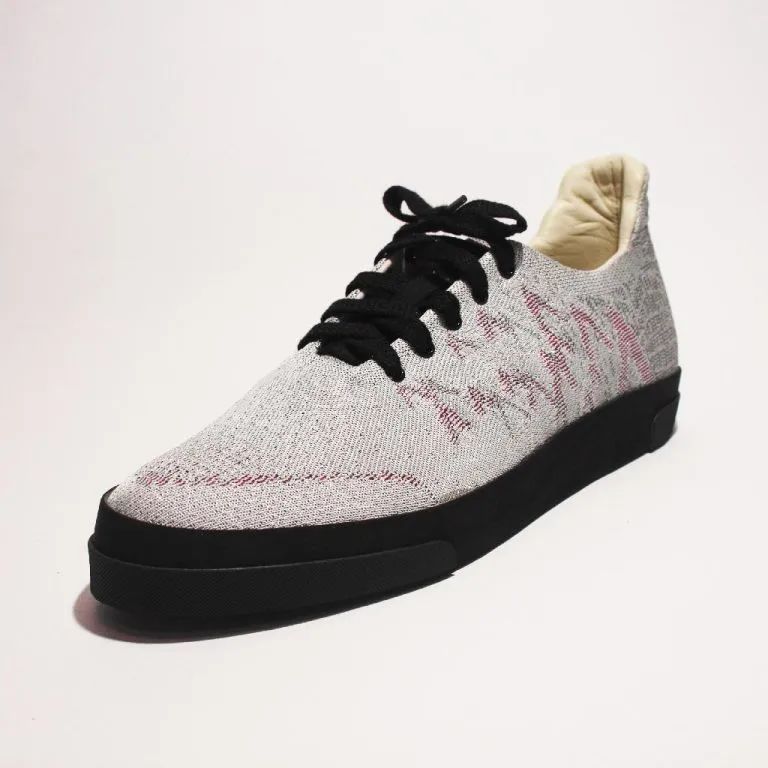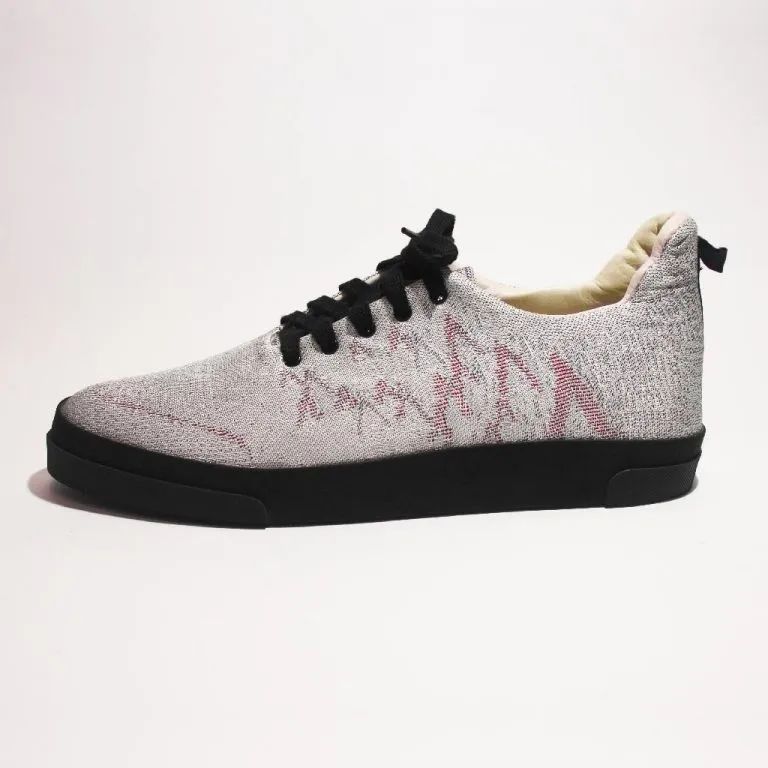Recycled Woven Fabric Made From Discarded Sneakers
Against the backdrop of the global challenge of shoe waste management, Dutch designer Roos Soetekouw has embarked on a forward-looking research project in collaboration with textile equipment manufacturer Van de Wiele.
How can discarded athletic shoes be crushed and reconstituted into spinnable fibers for large-scale textile applications?
The project named Van de Wiele Leno Shoes not only breaks through the bottleneck of material structure in shoe recycling but also explores the synergistic relationship between textile technology and circular resources, bringing new material concepts to the fashion industry and textile manufacturing.

Van de Wiele asked Soetekouw to design a prototype of a footwear knit using a piece of fabric.
First, we need to understand why sports shoes are difficult to recycle.
Modern athletic shoes are composed of a variety of materials, including foam, rubber, polyester fibers, leather, and synthetic leather, which are tightly bonded through adhesives and hot-melt processes. This multi-layered, multi-material, and multi-adhesive structure makes them extremely difficult to disassemble and recycle, making them a representative category in the textile industry with high carbon emissions and challenging disposal.
Turning waste shoes into "knittable" fibers
Roos Soetekouw collaborates with Van de Wiele to transform discarded sneaker materials into new textile materials through multiple steps.
1. Crushing classification: Separate and mechanically crush shoes made of different materials to obtain uniformly sized granules or short fibers.
↓
2. Bonding into filaments: Using controlled hot-melt and mechanical winding methods, these recycled scraps are reorganized into textile fiber bundles with a certain degree of continuity.
↓
3. Lenoweave Weaving Process: Utilizing leno weaving technology, these recycled fibers are woven into fabrics that are structurally stable, density-controllable, and design-oriented, endowing them with new functional and decorative value.
In this way, instead of treating "recycled shoes" as the end product, discarded shoes are returned to the material source and re-enter the textile supply chain, achieving true material-level regeneration.

Van de Wiele requested Soetekouw to design a prototype of a shoe knit using a piece of fabric.
Leno weave system
This technique is known as leno, one of the oldest methods of gauze weaving. Gauze appears light, thin, and translucent. Leno weaving is also referred to as “fancy gauze.” Leno weaving can be defined as twisting the warp yarns, with the weft yarns being doubled or thicker than those in regular gauze. This process not only securely locks in slippery or irregular regenerated yarns, but also visually creates a unique mesh texture, giving the material a more decorative, architectural, and spatially dynamic appearance.
This technology also supports the interweaving of various weft yarn materials, providing greater flexibility in process adaptation for recycled materials.
Shifting from waste disposal to resource design, achieving physical reconstruction of cross-category materials, providing new solutions for highly mixed products. Although still in the experimental stage, this regenerated fabric has already demonstrated potential for application in various scenarios.
From the unique perspective of returning to weaving techniques by addressing the recycling challenge, a sustainable closed-loop model of "transforming discarded shoes into designable materials" has been constructed. It is not just a technical exploration but a realization of a sustainable path of "product → waste → raw material".
【Copyright and Disclaimer】The above information is collected and organized by PlastMatch. The copyright belongs to the original author. This article is reprinted for the purpose of providing more information, and it does not imply that PlastMatch endorses the views expressed in the article or guarantees its accuracy. If there are any errors in the source attribution or if your legitimate rights have been infringed, please contact us, and we will promptly correct or remove the content. If other media, websites, or individuals use the aforementioned content, they must clearly indicate the original source and origin of the work and assume legal responsibility on their own.
Most Popular
-

List Released! Mexico Announces 50% Tariff On 1,371 China Product Categories
-

EU Changes ELV Regulation Again: Recycled Plastic Content Dispute and Exclusion of Bio-Based Plastics
-

Mexico officially imposes tariffs on 1,400 chinese products, with rates up to 50%
-

Clariant Unveils Cost-Cutting Plan Details, Plans to Shut Down Multiple Plants
-

Nissan Cuts Production of New Leaf EV in Half Due to Battery Shortage






